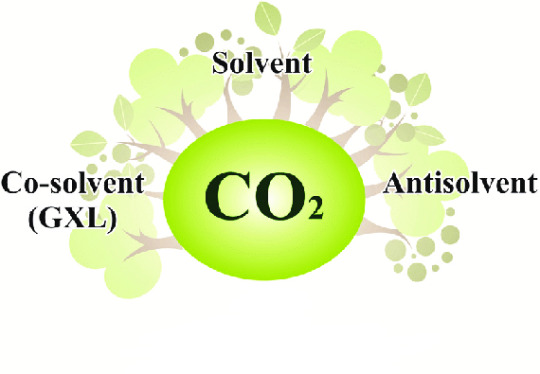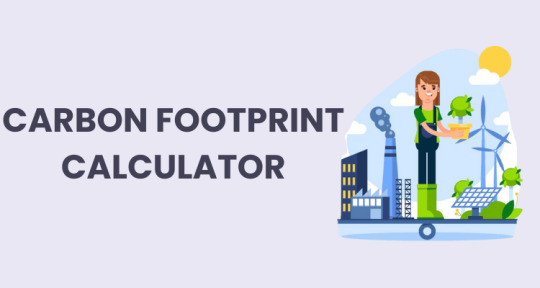#CarbonOffsets
Explore tagged Tumblr posts
Text
#Agroforestry#Haryana#GreenInnovations#Sustainability#CarbonOffsets#EcosystemRestoration#Farming#Environment
0 notes
Text
How to Offset Your Carbon Footprint While Traveling
For cheap and best Travel Bookings - https://tripsdeals.com/
Traveling is a great way to explore new places, immerse yourself in different cultures, and create lasting memories. However, it also comes with a significant environmental impact. One of the major contributors to your carbon footprint while traveling is transportation, especially air travel. The good news is, there are numerous ways to offset your carbon footprint and make your travels more eco-friendly.
Choose Sustainable Transportation Options The mode of transportation you choose plays a major role in reducing your carbon footprint. Opt for trains or buses instead of flights whenever possible. Trains, in particular, are known for their energy efficiency and lower emissions. If driving is necessary, consider renting a fuel-efficient or electric car to minimize carbon emissions.
Offset Your Carbon Emissions If flying is unavoidable, consider purchasing carbon offsets. Many airlines and travel agencies offer options to offset the emissions caused by your flight. By contributing to projects that focus on renewable energy, reforestation, or methane capture, you can counterbalance the environmental impact of your travel. Make sure to do research to ensure that the carbon offset programs are legitimate and effective.
Stay in Eco-friendly Accommodations When booking your stay, choose accommodations that prioritize sustainability. Many hotels and resorts are adopting green practices such as energy-efficient lighting, water-saving systems, and waste reduction programs. Look for accommodations that have certifications like Green Key or EarthCheck, which indicate their commitment to sustainability.
Pack Light Packing light not only makes travel easier but also helps in reducing your carbon footprint. The heavier your luggage, the more energy it takes to transport it. By packing only the essentials, you’re contributing to lowering the amount of fuel used during your travel.
Support Local and Sustainable Businesses Once you arrive at your destination, try to support local businesses that follow sustainable practices. Opt for restaurants that use locally sourced food, and choose activities that are eco-friendly and respect the local environment. Sustainable tourism helps protect natural resources and supports the local economy.
Minimize Plastic Use Plastic pollution is a significant environmental issue. Reduce your plastic consumption by using reusable water bottles, bags, and containers. By cutting down on single-use plastics, you can make a big difference in reducing your environmental impact during your travels.
By adopting these simple yet effective strategies, you can offset your carbon footprint while enjoying your travels. With the right choices, it's possible to make travel both enjoyable and sustainable.
How to Offset Your Carbon Footprint While Traveling
#carbonfootprint#ecotravel#sustainabletourism#carbonoffsets#greenaccommodation#travelgreener#eco-friendlytravel#reduceemissions#sustainabletransportation#reducetravelimpact
0 notes
Text
0 notes
Text
#Agroforestry#Haryana#GreenInnovations#Sustainability#CarbonOffsets#EcosystemRestoration#Farming#Environment
0 notes
Text

#beststartupstory#Ahya#ClimateTech#NetZero#Sustainability#SaudiStartup#AI#MENAP#GreenTech#CarbonOffsets#SustainableBusiness#EnvironmentalImpact
0 notes
Text
Former SBTi Employee Files Complaint with British Charity Watchdog
LONDON — A former employee of the Science-Based Targets Initiative (SBTi) has lodged a formal complaint with the Charity Commission, alleging that the prominent non-profit organization, which is relied upon by some of the world's largest corporations to audit their carbon emission reduction goals, has strayed from its core mission.
The complaint, submitted last month and reviewed by Reuters this week, accuses SBTi's board of trustees of acting "recklessly" in their decision to allow companies to incorporate carbon credits into their emission reduction targets. The former employee argues that this policy shift undermines the organization’s fundamental objective, which is to drive direct reductions in corporate emissions rather than relying on offset mechanisms.
Historically, the SBTi had opposed the use of carbon offsets when setting targets. However, in April, the organization announced a controversial plan to consider incorporating these offsets, a move that was met with significant backlash from its staff. In response to the criticism, the board stated that it would pause any immediate changes to the rules and instead conduct a review of whether to officially adopt carbon offsets. The controversy surrounding this decision also led to the resignation of Luiz Amaral, SBTi's CEO, who stepped down earlier this month, citing unspecified personal reasons.
The complaint, which has been shared with Reuters by the anonymous former employee, alleges that SBTi's trustees violated organizational rules and disregarded expert advice by contemplating the inclusion of carbon credits. The former employee also claims that several board members have connections to the carbon offset industry, raising concerns about potential conflicts of interest. Notably, SBTi is partially funded by the Bezos Earth Fund, established by billionaire Jeff Bezos, which is a significant investor in voluntary carbon markets.
The Charity Commission has not yet commented on whether it will investigate the complaint. If the regulator chooses to pursue an inquiry, potential outcomes could range from removing trustees to appointing interim managers, or, in extreme cases, revoking the charity's status, according to Chris Priestley, a charity law expert at Withers LLP.
Holger Hoffman-Riem, a member of SBTi's technical advisory group, which advises the organization on standards and guidelines, has voiced support for an external review. "An external review would serve the board’s interests by demonstrating compliance with charity law and governance principles," he stated.
SBTi's spokesperson acknowledged receipt of the complaint but declined to comment further until they have reviewed the details themselves. The spokesperson reiterated that the organization currently does not permit the use of carbon offsets in target setting, emphasizing that further details on the consultation process will be provided in due course.
The complaint underscores ongoing debates about the effectiveness and integrity of carbon offsetting as a tool for climate action, highlighting the tension between different approaches to reducing global carbon emissions.
#SBTi#CharityWatchdog#CarbonOffsets#EnvironmentalPolicy#ClimateAction#CharityRegulation#BezosEarthFund#EmissionReduction
0 notes
Video
youtube
$100+ trillion needed to stabilize the climate. Who will pay for it? (S0...
#youtube#ClimateStabilization#ClimateChange#GlobalWarming#EnvironmentalCrisis#ClimateAction#ClimateFinance#RenewableEnergy#GreenInvestment#CarbonTax#CarbonOffsets
0 notes
Text
Web3 Revolutionizing Climate Action: Sustainable Solutions in Carbon Markets

One of the biggest problems facing humanity in the twenty-first century is climate change.The science is clear: if we want to avoid the worst consequences of global warming, we must dramatically reduce our greenhouse gas emissions. However, this is not easy to achieve, as it involves transforming the way we produce and consume energy, as well as the way we do business.
Fortunately, technology can be a great ally in this fight. In particular, Web3 technology, which is based on the use of decentralized networks, open protocols and cryptocurrencies, is revolutionizing sustainable energy markets. Web3 offers innovative solutions to manage and trade carbon credits, incentivize the reduction of emissions and offset the carbon footprint.
The goal of this article is to explore how Web3 and blockchain technology are transforming sustainability, focusing on carbon trading and efficient emissions management. We will also look at some practical examples of how Web3 is driving the growth of voluntary carbon markets and facilitating peer-to-peer energy trading.
Web3 and the Sustainable Revolution
Web3 is a term used to describe the evolution of the web towards a more open, participatory and democratic platform. Web3 is based on the use of technologies such as blockchain, smart contracts, tokens and oracles, which allow the creation of decentralized applications (DApps) that work without intermediaries or central authorities.
These technologies have allowed us to develop sustainable solutions in areas such as renewable energy and carbon capture. Projects like Power Ledger allow users to generate and sell solar energy through a blockchain platform; o CarbonX uses tokens to reward consumers for reducing their carbon footprint.
However, these solutions are not without challenges. One of them is the volatility in the value of Web3-related assets, such as cryptocurrencies or tokens. These assets can experience strong fluctuations due to factors such as supply and demand, speculation or regulations. For example, there has recently been a 70% drop in the value of some Web3 assets, which has negatively affected their adoption and credibility.
However, it is important not to lose sight of the technological advances underlying these solutions, as they are what can really make a difference in the transition to a low-carbon economy. Web3 development company offers a unique opportunity to create a more transparent, efficient and inclusive system for managing and trading carbon credits.
Blockchain and Carbon Credit Management
Carbon credits are units that represent one ton of carbon dioxide (CO2) equivalent that has been avoided or removed from the atmosphere. Carbon credits can be generated through projects that reduce or capture greenhouse gas emissions, such as planting trees, installing solar panels, or capturing methane.
Blockchain technology is being used to address climate change, managing carbon credits and reducing emissions. Blockchain is a technology that allows the creation of distributed and immutable records of transactions, without the need for intermediaries or central authorities. Blockchain offers advantages such as transparency, traceability, security and efficiency.
Blockchain simplifies the integration of renewable energy, enabling efficient carbon trading and a financial incentive for emissions reduction. Projects like WePower use blockchain to connect producers and consumers of green energy, facilitating access to carbon credits; o Nori uses blockchain to create a carbon removal market, rewarding farmers for sequestering CO2 in the soil.
Web3 and Carbon Offsetting
Carbon offsetting is a practice of offsetting greenhouse gas emissions that cannot be avoided or reduced by investing in projects that eliminate or prevent them. Carbon offsetting can be done through mechanisms such as the Clean Development Mechanism (CDM) or the Gold Standard.
Web3 revolutionizes the carbon offset market, providing transparency and reducing risks. Web3 allows you to create decentralized carbon registries, which verify and validate the carbon credits generated by offset projects. These records can be audited by anyone, increasing trust and credibility.
Additionally, Web3 makes it easier for both suppliers and buyers to access and participate in the carbon offset market. Web3 allows you to create platforms that directly connect the actors involved, without intermediaries or commissions. Web3 also allows you to create tokens that represent carbon credits, making them easier to trade and use.
A practical example of how Web3 is applying carbon management is the partnership between the Energy Web Foundation and Vodafone. Energy Web Foundation is a non-profit organization that develops blockchain solutions for the energy sector. Vodafone is a multinational telecommunications company. Together they have created a blockchain platform that allows users to verify and certify their emissions and compensation actions
Peer-to-Peer Energy Trading on Blockchain
Peer-to-peer energy trading is a form of trading in which users can buy and sell energy directly with each other, without intermediaries or centralized networks. Peer-to-peer energy trading can improve the efficiency, resilience and sustainability of the energy system.
Blockchain is taking peer-to-peer energy trading to a new level, enabling direct and decentralized trading. Blockchain allows the creation of intelligent networks (smart grids) that connect users with renewable energy sources, such as solar panels or wind turbines. These smart grids can adjust energy supply and demand in real time, optimizing usage and price.
In addition, blockchain allows the creation of tokenization solutions and smart contracts, which facilitate energy trading and payment. Tokenization consists of converting an asset or right into a digital token that can be exchanged on a blockchain platform. Smart contracts are self-executing agreements that are activated when certain conditions are met.
An example of how blockchain is innovating tokenization and smart contracts is Veridium and its partnership with IBM. Veridium is a company that offers solutions to measure, manage and offset carbon emissions. IBM is a leading technology and innovation company. Together they have created a blockchain platform that uses tokens to represent carbon credits and smart contracts to automate their buying and selling.
Beyond Cryptocurrencies: Potential of Web3
Web3 and blockchain are much more than cryptocurrencies. These technologies have the potential to transform various economic sectors, such as health, education, transportation or agriculture. Web3 offers solutions to improve the quality, accessibility and efficiency of services, reduce costs and risks, and promote inclusion and equity.
It is important to comprehensively understand the transformative potential of these technologies for the business landscape. Web3 and blockchain can change the rules of the game, creating new business opportunities, but also new challenges and risks. Therefore, it is essential to be prepared and adapt to this transformation
Digitalization and Growth in the Voluntary Carbon Market
Digitization is a process that consists of converting analog information into digital format. Digitization can improve security and transparency in the carbon market by creating immutable and verifiable records of carbon credit transactions.
Digitalization can also drive the growth of voluntary carbon markets by supporting genuine sustainability initiatives. Voluntary carbon markets are those in which actors decide to offset their emissions on their own initiative, without being bound by international standards or agreements.
Digitalization can make it easier for both suppliers and buyers to participate in voluntary carbon markets. Digitalisation can simplify the carbon credit verification and certification process, reduce costs and time, and increase trust and credibility.
Final conclusion
In this journey through the Web3 revolution and blockchain technology in the field of sustainability, a promising horizon is evident. Beyond cryptocurrencies, these emerging technologies are positioned as key catalysts in the fight against climate change and the creation of a green economy. The capacity for decentralization, transparency and efficiency that they offer becomes a beacon of hope.
Despite challenges, such as asset volatility, it is highlighted that these are temporary obstacles on the path to a more sustainable future. The responsible adoption of these innovations is presented as an ethical imperative, and its impact goes beyond the financial sphere, opening doors to transformation in diverse sectors such as health, education and agriculture.
At this crucial point in our history, collaboration between sectors is revealed as a determining factor. Active citizen participation stands as an essential driver for the success of these initiatives. Beyond technological effectiveness, it is crucial to remember that we are shaping a future in which ethics and social responsibility must be the pillars.
Looking forward, the vision encompasses a landscape where technology, environmental awareness and collaboration build a strong fabric for a more equitable and sustainable society. The mass adoption of Web3 and blockchain not only represents a technological revolution, but a revolution in the way we conceive and preserve our shared home: planet Earth.
This is the beginning of a new era, where innovation and consciousness intertwine to build a greener and more promising tomorrow. The invitation is clear: let us adopt these technologies wisely, forge strong alliances and together build a future where sustainability is more than a goal, it is the very basis of our progress.
#Web3#Blockchain#ClimateAction#Sustainability#CarbonMarkets#RenewableEnergy#Decentralization#GreenEconomy#Cryptocurrency#PeerToPeerTrading#CarbonOffsets#Digitalization#VoluntaryCarbonMarket#SmartContracts#TechForGood
0 notes
Text
Are Carbon Offsets Really Helping Fight Climate Change? Find Out Why Some Experts Are Skeptical #carbonoffsets #climatechange #energyefficiency #greenhousegasemissions #renewableenergysources
#Politics#carbonoffsets#climatechange#energyefficiency#greenhousegasemissions#renewableenergysources
0 notes
Text
Carbon Dioxide Market Evolution: From Emissions Regulation to Renewable Energy Integration
The global carbon dioxide market size is expected to reach USD 15.46 billion by 2030, expanding at 5.0% CAGR from 2024 to 2030, according to a new report by Grand View Research, Inc. The growth is majorly driven by the increasing usage of CO2 for enhanced oil recovery (EOR) in oil & gas plants.carbon dioxide (CO2) is considered to be among the major and most extensively utilized medical gases. Furthermore, in the medical industry, CO2 is used in respiratory and cryotherapy stimulation during the process and post-anesthesia application. In cryotherapy, CO2 in frozen form (–78.5 °C) is used for killing body cells via a crystallization process. This gas can also be used in several processes to remove moles, skin tags, and warts.

Carbon Dioxide Market Report Highlights
Ethyl alcohol dominated the source type by accounting for a revenue share of 33.0% in 2023. It is projected to grow at the highest growth rate of 5.2% from 2024 to 2030 owing to its reliability as an easily available long-term source and high commercial value in producing CO2 as a by-product
Further, growth in demand for food-grade carbon dioxide in the forecast period will boost the growth of the production of carbon dioxide from ethyl alcohol
The food and beverages application segment of the market is anticipated to grow at a CAGR of 5.7% from 2024 to 2030, by revenue, thanks to rising demand for carbonated drinks globally
North America accounted for the largest revenue share of 42.0% of the CO2 industry in 2023. It is expected to continue its dominance over the forecast period. This can be attributed to increasing R&D, expansion of the industrial sector & growth of enhanced oil recovery processes
For More Details or Sample Copy please visit link @: Carbon Dioxide Market Report
CO2 also finds application in modern medicine to minimize invasive surgeries. In medicinal baths, it induces warm sensations and acts as a vasodilator for the skin by stimulating its heat receptors. In addition, insufflation with CO2 makes it easier to perform endoscopic procedures.
CO2 can be produced and recovered through various sources such as ethyl alcohol, hydrogen, ethylene oxide, substitute natural gas, and various other sources. Further, current research & development to capture carbon emissions has gained momentum. New research and development do not only aim to capture the CO2 in the form of carbon emissions but to refine and reuse it for some applications.
The carbon capture and storage (CCS) technology is capable of delivering considerable emission reductions from the utilization of fossil fuels. It is capable of lowering emissions from a wide range of industries such as power generation, steel, iron, refining, petrochemicals, and cement manufacturing. CCS technologies include capture, transport, and storage. Capture technology includes post-combustion, pre-combustion, oxy-firing, and industrial separation.
The key players in this industry are Air Products and Chemicals Inc.; Messer SE & Co. KGaA; Air Liquide; Linde Plc to maintain the market, share. Large firms frequently engage in mergers and acquisitions as well as new product launches. For instance, In September 2022, Covestro and SOL Kohlensäure GmbH & Co. KG signed a memorandum of understanding for collaboration in regards to the supply of biogenic CO2, effective from September 2022.
#CarbonDioxideMarket#CarbonDioxide#CO2#CarbonTrading#CarbonOffsets#CarbonCapture#EmissionsReduction#GreenEconomy#CarbonMarket#Decarbonization#ClimateFinance#LowCarbonFuture#EmissionsTradingSystem#CarbonFinance
0 notes
Photo

Carbon Footprint Calculator - Measure and Reduce Your CO2 Emissions
**Quantify Your Impact with Our Carbon Footprint Calculator!**
Ready to tread lightly on the planet? Our Carbon Footprint Calculator is your guide to understanding and reducing your carbon impact. Let's navigate through the steps to estimate your carbon footprint:
**How to Use the Carbon Footprint Calculator:**
Step 1: Enter Car Miles:
- Begin by entering the number of miles you drive in a car each year. This accounts for the emissions produced by your vehicle's fuel consumption.
Step 2: Input Electricity Usage:
- Provide your annual electricity usage in kilowatt-hours (kWh). This reflects the amount of energy consumed from non-renewable sources.
Step 3: Measure Waste Generated:
- Enter the quantity of waste you generate in pounds over a year. This includes materials contributing to landfill methane emissions.
Calculate Your Carbon Footprint:
- Click the "Calculate" button to compute your estimated carbon footprint.
**Real-time Example:**
Imagine someone driving 8,000 miles per year, using 5,000 kWh of electricity, and generating 600 pounds of waste. Upon calculation, their carbon footprint is approximately 7.43 metric tons CO2e per year.
**Take the First Step towards a Greener Future with Our Carbon Footprint Calculator** It's enlightening, actionable, and just a click away!
#calculatorcentral#carbonfootprintcalculator#carbonfootprint#calculatecarbonfootprint#environment#sustainability#climatechange#ecofriendly#carbonemissions#environmentalimpact#greentech#carbonreduction#sustainableliving#carbonfootprintanalysis#carbonoffsets#CarbonFootprint#EcoFriendlyLiving#CalculatorCentral#SustainableLifestyle#GreenCalculations
1 note
·
View note
Text
1 note
·
View note
Text
How to Offset Your Carbon Footprint with Carbon Credits
Offsetting your carbon footprint with carbon credits is a practical way to take responsibility for your emissions. Carbon credits represent a reduction or removal of greenhouse gases from the atmosphere, often achieved through renewable energy, reforestation, or clean technology projects. By purchasing these credits, individuals or businesses can balance out the emissions they produce from activities like travel, manufacturing, or energy use. To ensure impact, choose verified credits from reputable programs. It’s a step toward climate accountability and supporting global sustainability efforts.
#CarbonCredits#CarbonOffset#CarbonFootprint#ClimateAction#NetZero#GoGreen#SustainableLiving#ClimateSolutions#ReduceEmissions#GreenChoices
0 notes
Text
A Breakdown of Global CO2 Emissions: A Look

As the climate crisis gets worse, it's important to understand where emissions come from and how we can reduce them. Pinpointing the sectors driving the majority of worldwide CO2 emissions enables effective steps toward a carbon-neutral future and net zero emissions, promoting sustainability. While tools such as a carbon footprint calculator are beneficial for individuals and companies to track their effect, addressing the impact at an industry level is paramount. 1. Energy Production The energy sector produces the most CO2 in the world, creating around 73% of all greenhouse gases. Most of these emissions are caused by burning fuels like coal, oil, and natural gas to produce power and heat.Despite the growth of renewable energy, numerous nations continue to rely heavily on coal, oil, and natural gas. The shift to renewable energy is critical for meeting net zero emissions objectives. 2. Industry and Manufacturing Manufacturing sectors—e.g., cement production accounts for approximately 8% of global carbon emissions. Businesses are starting to adopt carbon offset measures and energy-saving practices to reduce their carbon footprint. 3. Transportation Transportation adds about 15–20% of the world’s CO2 emissions. This includes emissions from cars, trucks, ships, and airplanes. The transition to electric vehicles and alternative fuels is gaining momentum as countries work to decrease transport-related emissions. Analyzing CO2 emissions by country frequently highlights transportation as a significant sector, particularly in developed nations. 4. Agriculture and Land Use Although agriculture produces more methane and nitrous oxide than CO2, it also contributes to CO2 emissions via deforestation and changes in land use. Protecting forests and bettering land management are vital elements of carbon offset programs, which aim to balance emissions through environmental restoration.
5. Buildings Residential and commercial buildings consume energy for heating, cooling, and powering equipment. Enhancing insulation, switching to green energy sources, and updating older infrastructure can significantly cut emissions and help achieve carbon neutrality.
In Summary The initial step towards real change involves understanding the sectors contributing to global emissions. Utilizing a carbon footprint calculator can help measure individual or organizational influence, while supporting carbon offset programs and governmental policies targeting net zero emissions is crucial.
Together, we can build a future where we produce no extra carbon and take care of the climate.
#NetZero#CarbonNeutral#ClimateCrisis#CO2Emissions#SustainableFuture#GreenEnergy#CarbonOffset#CleanTransport#GreenBuildings#ClimateAction#CarbonFootprint#SustainableLiving#Decarbonization#EnvironmentalRestoration#GlobalWarming
0 notes
Text
#TreePlantationInHimachal#GrowBillionTrees#HimachalPradesh#ReforestTheHills#GreenHimachal#CSRPlantation#MountainForests#EcoRestoration#Afforestation#NativeTrees#CarbonOffset#SustainableForestry#ClimateAction#GiftATree#DigitalForest#GeoTaggedTrees#EnvironmentFriendly#ForestCoverIndia#HimalayanBiodiversity
0 notes
Text

Carbon Offsetting | ESG Strategy | Carbon Neutral Group
Carbon Neutral Group specialises in carbon offsetting solutions for businesses, ensuring environmental responsibility and sustainable impact mitigation.
0 notes